LG 24.50 cu. ft. 3-Door French Door Refrigerator in PrintProof Stainless with Ice and Water Dispenser and Slim Door Ice
Ice & water dispenser is tall enough to fit pitcher & pint glass. Features large capacity, fingerprint resistant, and easy to clean. Smart Home & Wi-Fi enabled to operate & troubleshoot on phone app.
If you think a refrigerator with top-of-the-line features means sacrificing style or space, this will make you reconsider. With over 24 cu. ft., this 33 in. wide refrigerator has the largest capacity in the market and features like a tall water dispenser with an ice system that frees up shelf space. With that, and much more, you get the peace-of-mind of a 10-year limited warranty on linear compressor. It is a refrigerator with something for everyone.
- Save money and energy with this ENERGY STAR certified LG refrigerator that exceeds new 2014 energy standards
- The water and ice dispenser in this LG 3-Door refrigerator is one of the tallest around, measuring in at an ultra-accommodating 12.6 in.
- The Slim SpacePlus Ice System provides maximum shelf space and allows even more space for door bins in 33 in. width refrigerators
- Electronic controls and LED display operate at just a fingers touch, they provide easy selection of refrigeration and freezer temperatures as well as Water and Ice selection, IcePlus, and Child Lock
- The Linear Compressor reacts quickly to temperature fluctuations and helps keep your food fresher, longer
- Spill-proof glass shelves contain spills and simplify cleanup, preventing liquids from leaking
- 4-Compartment Crisper System gives you easy access and more ways to organize your fruits, vegetables, and beverages; this refrigerator comes with 2 humidity-controlled crisper drawers, a full-width Glide-N-Serve drawer, and a bonus drawer for fruits and vegetables
- 6 door bins (2 adjustable gallon-size) – store your gallons of milk or juice on the door, freeing up shelf space
- The Smart Pull Handle makes opening and closing the freezer quick and easy
- LG’s 3-layer Fresh Air Filter with forced air circulation and dedicated fan pushes cleaner, fresher air into the fridge
- Interior LED lighting, contoured doors, hidden hinges, premium finishes and matching handles present a sophisticated and refined look in your kitchen inside and out
- Contoured doors, hidden hinges and color-matched handles provide a sleek, sophisticated look that coordinates with a variety of kitchen environments
- Smart Diagnosis helps the service center diagnose problems over the phone, helping you troubleshoot quickly
- 16.2 cu. ft. refrigerator compartment and 8.0 cu. ft. freezer compartment provide spacious storage options
- 3 Door French Door has one refrigerator door and one freezer drawer
Additional information
| Depth (Excluding Handles) | 33 |
|---|---|
| Depth (Including Handles) | 35.5 |
| Depth (Less Door) | 29 |
| Depth With Door Open 90 Degrees (In) | 51.5 |
| Height to Top of Door Hinge (in.) | 69.88 |
| Height to Top of Refrigerator (in.) | 68.63 |
| Product Depth x Height x Width (in.) | 35.5 x 69.88 x 32.75 |
| Refrigerator Width (In.) | 32.75 |
| Certifications and Listings | CSA Listed,Energy Star |
| Manufacturer Warranty | Limited Warranty: 1 Year Parts & Labors, 5 Years Sealed System and Compressor (Parts & Labor), 6-10 Years Linear Compressor (Parts Only) |
24 may refer to:
- 24 (number), the natural number following 23 and preceding 25
- one of the years 24 BC, AD 24, 1924, 2024
3 (three) is a number, numeral and digit. It is the natural number following 2 and preceding 4, and is the smallest odd prime number and the only prime preceding a square number. It has religious and cultural significance in many societies.
50 may refer to:
- 50 (number)
- one of the following years 50 BC, AD 50, 1950, 2050
- .50 BMG, a heavy machine gun cartridge also used in sniper rifles
- .50 Action Express, a large pistol cartridge commonly used in the Desert Eagle
- .50 GI, a wildcat pistol cartridge
- .50 Beowulf, a powerful rifle cartridge used in the AR-15 platform
- .50 Alaskan, a wildcat rifle cartridge
- 50 Cent, an American rapper
- Labatt 50, a Canadian beer
- Fifty (film), a 2015 film
- "The Fifty", a group of fifty airmen murdered by the Gestapo after The Great Escape in World War II
- 50 (album), a 2016 album by singer Rick Astley
- Benjamin Yeaten, widely known by his radio call sign "50", a Liberian military and mercenary leader
- "Fifty", a song by Karma to Burn from the album V, 2011
- 50 Virginia, a main-belt asteroid
- Audi 50, a supermini hatchback
The term dispenser typically imply a machine or container which is designed to release a specific amount of its content, usually liquids or powders/fine granular materials.
In common usage, a dispenser may also refer to:
A door is a hinged or otherwise movable barrier that allows ingress (entry) into and egress (exit) from an enclosure. The created opening in the wall is a doorway or portal. A door's essential and primary purpose is to provide security by controlling access to the doorway (portal). Conventionally, it is a panel that fits into the doorway of a building, room, or vehicle. Doors are generally made of a material suited to the door's task. They are commonly attached by hinges, but can move by other means, such as slides or counterbalancing.
The door may be able to move in various ways (at angles away from the doorway/portal, by sliding on a plane parallel to the frame, by folding in angles on a parallel plane, or by spinning along an axis at the center of the frame) to allow or prevent ingress or egress. In most cases, a door's interior matches its exterior side. But in other cases (e.g., a vehicle door) the two sides are radically different.
Many doors incorporate locking mechanisms to ensure that only some people can open them (such as with a key). Doors may have devices such as knockers or doorbells by which people outside announce their presence. (In some countries, such as Brazil, it is customary to clap from the sidewalk to announce one's presence.) Apart from providing access into and out of a space, doors may have the secondary functions of ensuring privacy by preventing unwanted attention from outsiders, of separating areas with different functions, of allowing light to pass into and out of a space, of controlling ventilation or air drafts so that interiors may be more effectively heated or cooled, of dampening noise, and of blocking the spread of fire.
Doors can have aesthetic, symbolic, ritualistic purposes. Receiving the key to a door can signify a change in status from outsider to insider. Doors and doorways frequently appear in literature and the arts with metaphorical or allegorical import as a portent of change.
French may refer to:
- Something of, from, or related to France
- French language, which originated in France
- French people, a nation and ethnic group
- French cuisine, cooking traditions and practices
Ice is water that is frozen into a solid state, typically forming at or below temperatures of 0 °C, 32 °F, or 273.15 K. As a naturally occurring crystalline inorganic solid with an ordered structure, ice is considered to be a mineral. Depending on the presence of impurities such as particles of soil or bubbles of air, it can appear transparent or a more or less opaque bluish-white color.
Ice exhibits at least nineteen phases (packing geometries), depending on temperature and pressure. When water is cooled rapidly (quenching), up to three types of amorphous ice can form depending on its history of pressure and temperature. When cooled slowly, correlated proton tunneling occurs below −253.15 °C (20 K, −423.67 °F) giving rise to macroscopic quantum phenomena. In the Solar System, ice occurs naturally from as close to the Sun as Mercury to as far away as the Oort cloud objects. Beyond the Solar System, it occurs as interstellar ice, which is overwhelmingly amorphous. Yet, virtually all of the ice on Earth is of a hexagonal crystalline structure denoted as ice Ih (spoken as "ice one h").
The most common phase transition to ice Ih occurs when liquid water is cooled below 0 °C (273.15 K, 32 °F) at standard atmospheric pressure. Ice formed in this way is abundant on the Earth's surface, particularly in the polar regions and above the snow line, where it can aggregate from snow to form glaciers and ice sheets. As snowflakes and hail, ice is a common form of precipitation, and it may also be deposited directly by water vapor as frost. The transition from ice to water is melting and from ice directly to water vapor is sublimation. These processes plays a key role in Earth's water cycle and climate. In the recent decades, ice volume on Earth has been decreasing due to climate change. The largest declines have occurred in the Arctic and in the mountains located outside of the polar regions.
Humans have been using ice for various purposes for thousands of years. Some historic structures designed to hold ice to provide cooling are over 2,000 years old. Before the invention of refrigeration technology, the only way to safely store food without modifying it through preservatives was to use ice. Sufficiently solid surface ice makes waterways accessible to land transport during winter, and dedicated ice roads may be maintained. Ice also plays a major role in winter sports.
LG Corporation (or LG Group), formerly known as Lucky-Goldstar, is a South Korean multinational conglomerate founded by Koo In-hwoi and managed by successive generations of his family. It is the fourth-largest chaebol (family-run conglomerate) in South Korea. Its headquarters are in the LG Twin Towers building in Yeouido-dong, Yeongdeungpo District, Seoul. LG makes electronics, chemicals, household appliances, and telecommunications products and operates subsidiaries such as LG Electronics, Zenith, LG Display, LG Uplus, LG Innotek, LG Chem, and LG Energy Solution in over 80 countries.
A refrigerator, colloquially fridge, is a commercial and home appliance consisting of a thermally insulated compartment and a heat pump (mechanical, electronic or chemical) that transfers heat from its inside to its external environment so that its inside is cooled to a temperature below the room temperature. Refrigeration is an essential food storage technique around the world. The low temperature lowers the reproduction rate of bacteria, so the refrigerator reduces the rate of spoilage. A refrigerator maintains a temperature a few degrees above the freezing point of water. The optimal temperature range for perishable food storage is 3 to 5 °C (37 to 41 °F). A similar device that maintains a temperature below the freezing point of water is called a freezer. The refrigerator replaced the icebox, which had been a common household appliance for almost a century and a half. The United States Food and Drug Administration recommends that the refrigerator be kept at or below 4 °C (40 °F) and that the freezer be regulated at −18 °C (0 °F).
The first cooling systems for food involved ice. Artificial refrigeration began in the mid-1750s, and developed in the early 1800s. In 1834, the first working vapor-compression refrigeration, using the same technology seen in air conditioners, system was built. The first commercial ice-making machine was invented in 1854. In 1913, refrigerators for home use were invented. In 1923 Frigidaire introduced the first self-contained unit. The introduction of Freon in the 1920s expanded the refrigerator market during the 1930s. Home freezers as separate compartments (larger than necessary just for ice cubes) were introduced in 1940. Frozen foods, previously a luxury item, became commonplace.
Freezer units are used in households as well as in industry and commerce. Commercial refrigerator and freezer units were in use for almost 40 years prior to the common home models. The freezer-over-refrigerator style had been the basic style since the 1940s, until modern, side-by-side refrigerators broke the trend. A vapor compression cycle is used in most household refrigerators, refrigerator–freezers and freezers. Newer refrigerators may include automatic defrosting, chilled water, and ice from a dispenser in the door.
Domestic refrigerators and freezers for food storage are made in a range of sizes. Among the smallest are Peltier-type refrigerators designed to chill beverages. A large domestic refrigerator stands as tall as a person and may be about one metre (3 ft 3 in) wide with a capacity of 0.6 m3 (21 cu ft). Refrigerators and freezers may be free standing, or built into a kitchen. The refrigerator allows the modern household to keep food fresh for longer than before. Freezers allow people to buy perishable food in bulk and eat it at leisure, and make bulk purchases.
Stainless may refer to:
- Cleanliness, or the quality of being clean
- Stainless steel, a corrosion-resistant metal alloy
- Stainless Games, a British video game developer
- Stainless Broadcasting Company, a TV broadcaster based in Michigan, US
- Stainless Banner, the second national flag of the Confederate States of America
Water is an inorganic compound with the chemical formula H2O. It is a transparent, tasteless, odorless, and nearly colorless chemical substance, and it is the main constituent of Earth's hydrosphere and the fluids of all known living organisms (in which it acts as a solvent). It is vital for all known forms of life, despite not providing food energy or organic micronutrients. Its chemical formula, H2O, indicates that each of its molecules contains one oxygen and two hydrogen atoms, connected by covalent bonds. The hydrogen atoms are attached to the oxygen atom at an angle of 104.45°. In liquid form, H2O is also called "Water" at standard temperature and pressure.
Because Earth's environment is relatively close to water's triple point, water exists on Earth as a solid, a liquid, and a gas. It forms precipitation in the form of rain and aerosols in the form of fog. Clouds consist of suspended droplets of water and ice, its solid state. When finely divided, crystalline ice may precipitate in the form of snow. The gaseous state of water is steam or water vapor.
Water covers about 71% of the Earth's surface, with seas and oceans making up most of the water volume (about 96.5%). Small portions of water occur as groundwater (1.7%), in the glaciers and the ice caps of Antarctica and Greenland (1.7%), and in the air as vapor, clouds (consisting of ice and liquid water suspended in air), and precipitation (0.001%). Water moves continually through the water cycle of evaporation, transpiration (evapotranspiration), condensation, precipitation, and runoff, usually reaching the sea.
Water plays an important role in the world economy. Approximately 70% of the fresh water used by humans goes to agriculture. Fishing in salt and fresh water bodies has been, and continues to be, a major source of food for many parts of the world, providing 6.5% of global protein. Much of the long-distance trade of commodities (such as oil, natural gas, and manufactured products) is transported by boats through seas, rivers, lakes, and canals. Large quantities of water, ice, and steam are used for cooling and heating in industry and homes. Water is an excellent solvent for a wide variety of substances, both mineral and organic; as such, it is widely used in industrial processes and in cooking and washing. Water, ice, and snow are also central to many sports and other forms of entertainment, such as swimming, pleasure boating, boat racing, surfing, sport fishing, diving, ice skating, snowboarding, and skiing.
With or WITH may refer to:
- With, a preposition in English
- Carl Johannes With (1877–1923), Danish doctor and arachnologist
- With (character), a character in D. N. Angel
- With (novel), a novel by Donald Harrington
- With (album), a 2014 album by TVXQ
- With (EP), a 2021 EP by Nam Woo-hyun

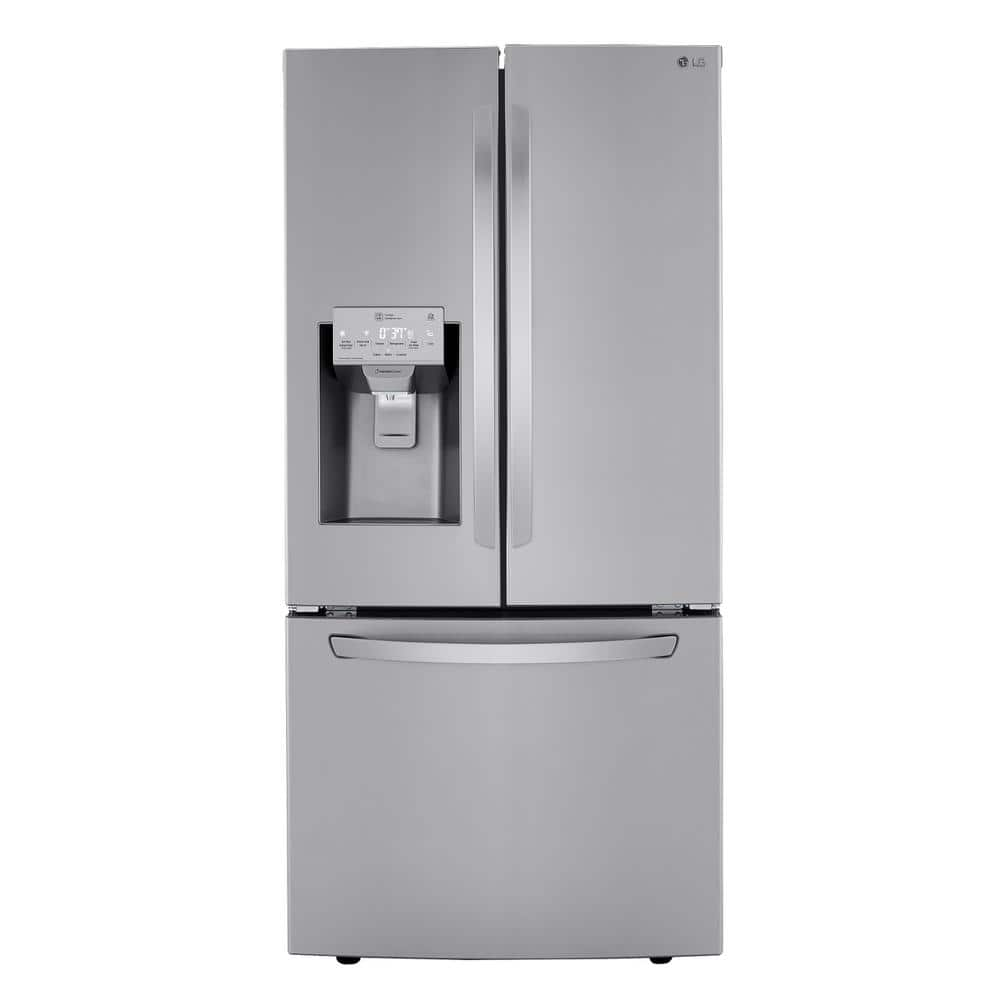
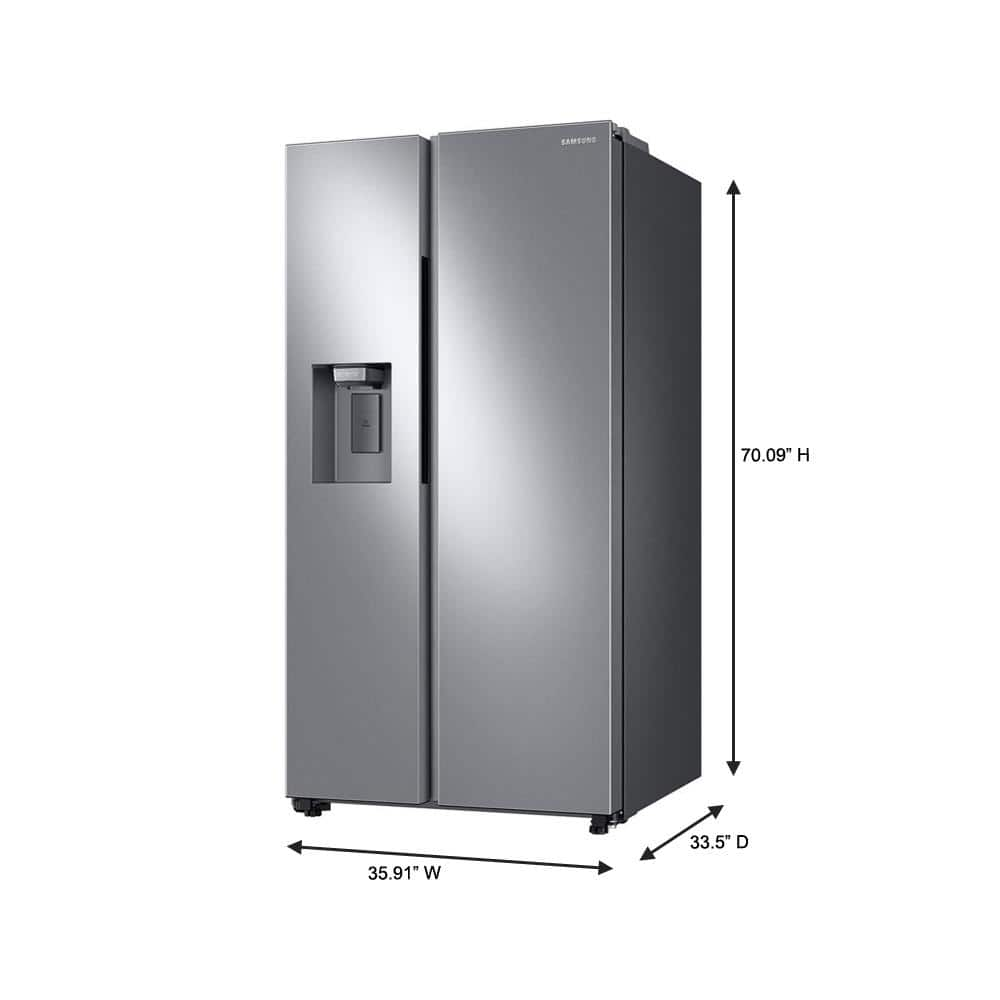
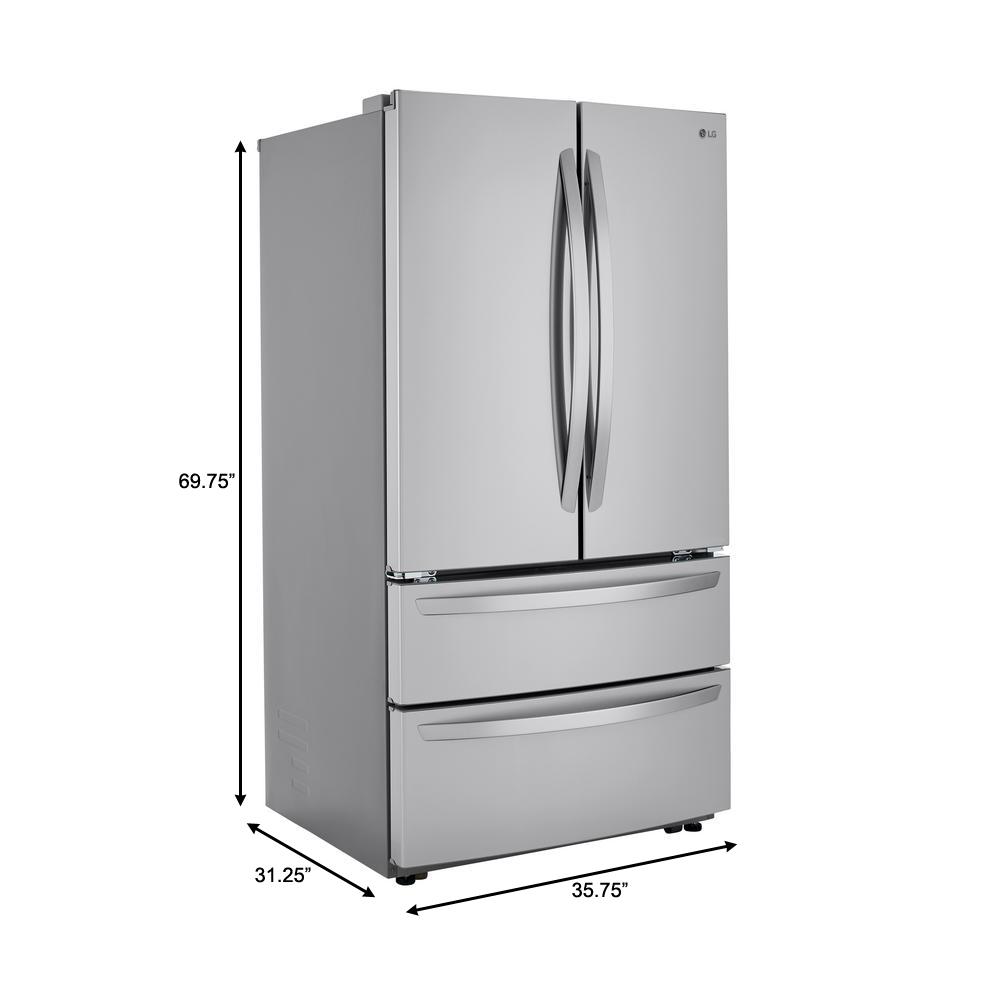
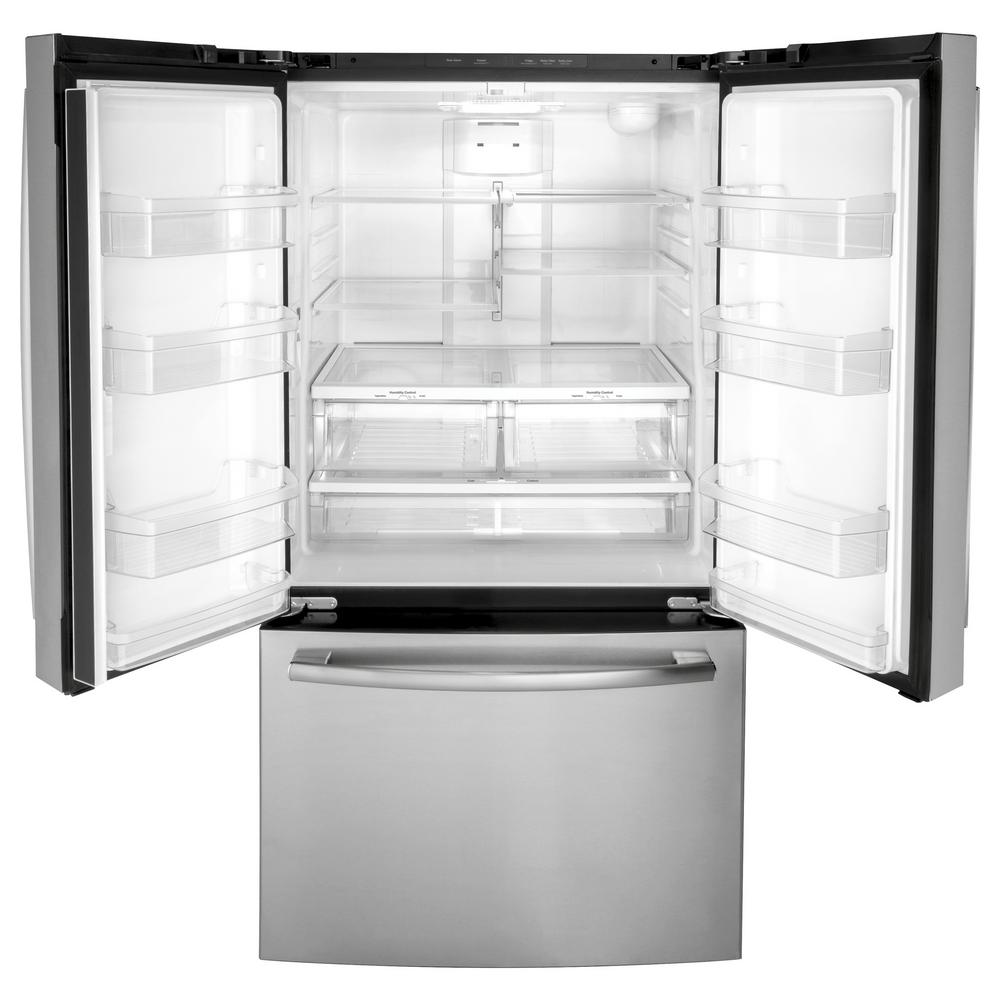
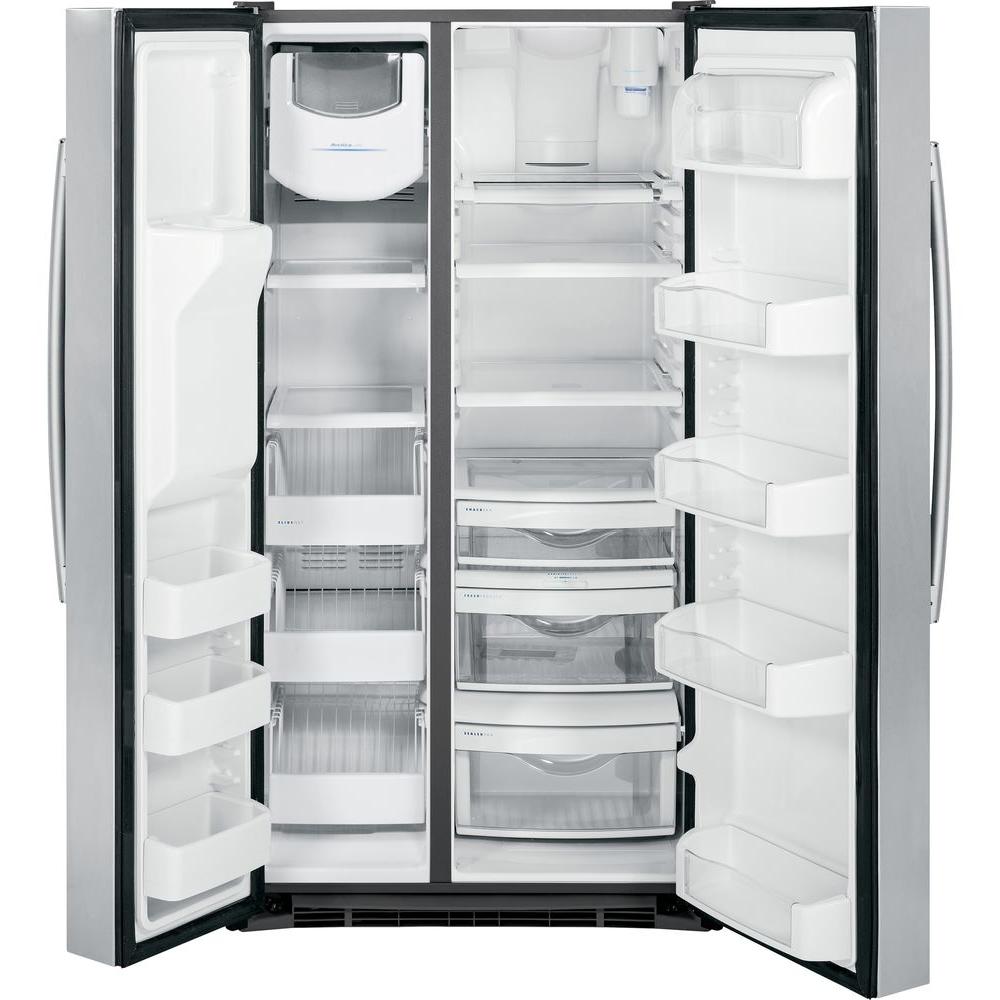
by Mike
The fridge was everything we wanted. Easy to install and light weight. Easy to roll in and out. The delivery guys were amazing.
by Sheila
Love my refrigerator very spacious.
by Blackie
Outstanding product. Delivery was flawless.
by Wilbur
I love it! So much space. I had to get the 33 inch to fit in a spot that was only made for a 33 inch and I’m so happy with it!!
by Sean
I love it. It keeps everything nice and cold. And I can fit twice as many groceries than I did with my old one. My old one is about the same size. God sent.
by Brinton
We have had this for three or four weeks and like the water and ice dispenser and the middle inside drawer. It is nice and quiet.
by John
Unbelievable space for a 33 inch width refrigerator. Capacity is 25 cubic feet.
by Mike
We waited a month after ordering this fridge to receive it. Worth the wait. The black stainless is beautiful and sleek. Most impressed with the in-door ice maker. Our previous fridge had in-door ice and water but made and stored the ice in the upper fridge compartment, taking up valuable space. The LG is made and stored completely in the door. Although the initial storage is somewhat small, additional storage is available in the lower freezer. Very easy to remove the upper ice storage and dump into the lower freezer – if you even need to do that. We tend to bulk up on ice for the beach cooler but usually the smaller, upper storage more than keeps up with normal demand. We are only about 6 weeks into ownership and so far, so great.